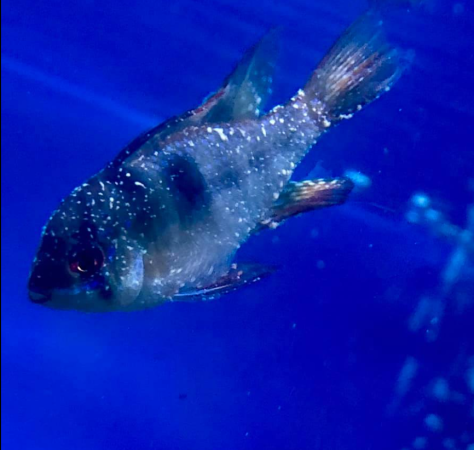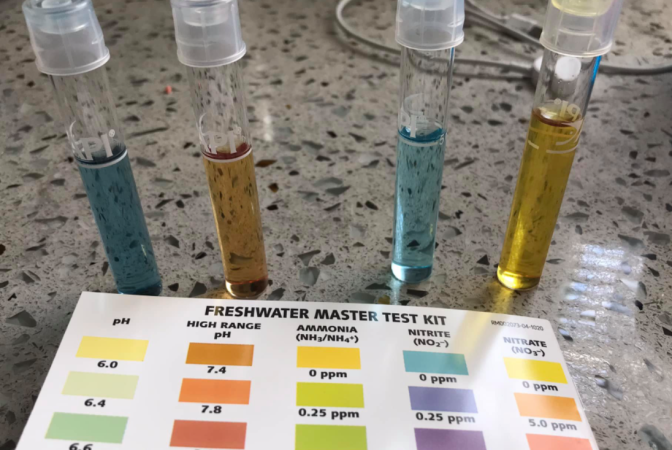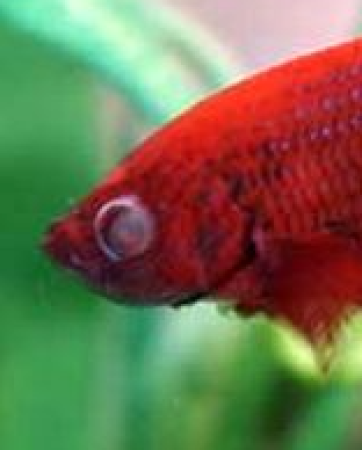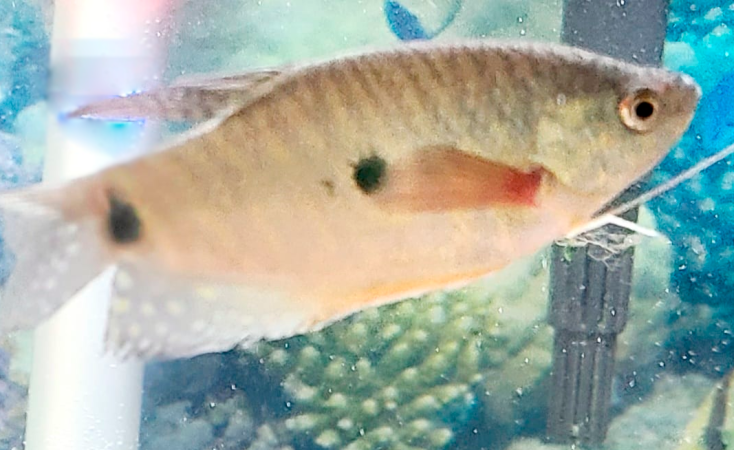HOW WE CAN RECOGNIZE THE DISERASE OF OUR FISH AND HOW WE TAKE CARE OF IT ?
- Apr 14, 2022
- Arianna Rizzi
- 454 0 0

If you want your fish to live long and healthy lives, then you need to make sure that they remain as disease free as possible. Fish are susceptible to a wide range of bacterial, viral, fungal, and parasitic diseases. By monitoring your water conditions daily and checking your fish for signs of disease, you can stay ahead of the game and keep your aquatic pets in prime condition.
Early intervention can head off many of the most common conditions, but, as with humans, prevention is always better than cure.
Risk factors
A fish housed alone is less likely to succumb to illness than one in a community aquarium because it is not subject to bullying by tankmates. This often causes minor injuries, such as damaged fins and scales, which may then become infected.
Aggression usually increases at the beginning of the spawning period, so a close watch should be kept on fish at this time.
The greatest risks to health occur when fish are introduced to the aquarium. New acquisitions should be held in a simple isolation tank for two weeks before transfer to the main tank, by which time any serious health problems should have emerged. With new fish, it is often helpful to remove all the occupants from the tank, rearrange the tank decor, then introduce new fish together with the previous occupants.
This strategy significantly reduces outbreaks of bullying.
Get to know your fish
Most common diseases of aquarium fish are treatable, provided they are identified in their early stages. Later in the course of a disease, obvious symptoms, such as major color changes or large parasites, will become apparent, but it may be too late for successful intervention. The best strategy for disease prevention is therefore close observation; knowing how your fish look, feed, swim, and interact with others allows you to spot subtle changes in appearance and behavior that may signal stress or the early stages of disease.
If you suspect that a fish may be ill, move the affected fish out of the main tank into a hospital tank for further observation and treatment. This will isolate the fish from its tankmates and prevent cross-infection. Always check the quality of water in the tank; dirty or unbalanced water may cause illness directly or put the fish under stress, thus predisposing it to attack by pathogens that may already be in the tank. Most healthy fish carry a natural burden of parasites, but environmental stress may lower the immune resistance of the fish and allow the parasites to multiply.
Effective treatments
The effective commercial remedies now available treat the great majority of tropical fish conditions; a knowledgeable retailer should be able to guide you to the most suitable one.
The treatment may be given in the home tank, in a stripped-down hospital tank, or in a small bath. Carefully follow the instructions given on the medication. Overdosing is likely to be harmful, especially for a fish already weakened by illness; similarly, do not stop the treatment earlier than advised if the fish seems to be recovering. Remember to dechlorinate any water used to make up treatment solutions and make sure it is at the same temperature as that in the main tank, in order to lessen the stress on the fish.
If an outbreak of unspecified disease occurs in an established group of fish (rather than in one individual that can be isolated from the group), regular partial water changes will always help, because they lessen the concentration of disease-causing organisms present.
Some illnesses simply defy treatment. If you need to kill a fish painlessly, carefully cut through the spinal cord behind the head with a sharp knife or take it to your veterinarian. Never be tempted to flush a fish—living or dead—down the drain.
Isolation and medication
In some cases, it is desirable or essential to treat a fish in a separate hospital tank—a relatively stress-free environment where sick fish can recuperate. This should be a small tank (about 12 gallons or 50 liters) containing no living plants, but with a simple filtration system, and perhaps a flowerpot or plastic plant as a refuge.
Using a hospital tank to quarantine new fish before transferring them to the main tank is a sensible way of reducing the risk that you will introduce diseases to your other fish
A small glass dish can be used to give concentrated medication—for example, to remove external bacteria, parasites, and other disease-causing organisms.
Methylene blue is a traditional remedy used for a range of ailments. It will, however, stain silicone sealant and should never be added to the main aquarium.
Home test kits include a wide variety of chemical analysis that can be carried out to identify almost any problem associated with water quality.
The design of the aquarium itself is influential in keeping the fish healthy. A well-planned tank provides retreats for shy species and lessens the risk of bullying in more territorial species.

Human health
- Switch off the power before placing your hands in the water.
- Always wear a pair of rubber gloves when coming in contact with tank water.
- Never try to create a flow of water through a siphon by sucking it.
- Don’t dump dirty water down the kitchen sink; use an outside drain if possible.
Signs of disease
Eyes:
- One or both eyes appear to be bulging abnormally from their sockets
- Bulging eye or eyes, accompanied by loss of appetite and color change
- One or both eyes have a cloudy appearance in the central pupillary area
- One or both eyes missing from their sockets, with no other obvious physical symptoms or behavioral abnormalities
- Area around the eyes becomes abnormally white
- Eyes develop a glazed appearance, and the fish has difficulty coordinating its movements

Skin:
- Skin loses its color, becoming paler than normal, and the fish appears less active than usual
- Growth resembling cotton fluff appears on an area of the body or on a fin
- White, pus-filled pores develop near the head, becoming ulcerated. Whitish feces may hang from the body
- Skin has a slimier appearance than normal
- Straggly pieces resembling cotton appear to trail down from the sides of the body
- Strangely shaped blemishes become evident on the sides of the body
Fins:
- Fins develop an abnormally ragged appearance, especially evident in the caudal fin
- Red streaks start to develop in the fins, which appear to be congested with blood
- Areas missing from the fins; especially evident in fish with unusually long fins
- White spots appear over the surface of the fins as well as on the body
- Fins are clamped down against the body, making it difficult for the fish to swim normally
- Splits develop in the fins, vertically in the dorsal fin and more horizontally in the caudal fin
Color:
- Fish becomes paler in color and loses its appetite
- Reddish areas become evident on various parts of the body, including the mouth, anal region, and bases of the fins
- Body develops a yellowish-gray cast, which extends to the fins as well as the body
- Body color alters, with markings appearing less defined than normal
- Pale areas develop on the head
- Eggs develop an abnormal

Shape:
- Abdominal area swells significantly, to the extent that the fish has difficulty swimming
- One or more unusual swellings appear anywhere on the surface of the fish’s body
- Fish undergoes a progressive loss of weight, in spite of the fact that it appears to have a healthy appetite
- Surface of the body erodes, forming ulcers
- Fish’s profile alters, with its belly area starting to bulge noticeably upward, indicating emaciation
Behavior:
- Fish starts to spend longer than normal at the surface of the tank, sometimes hanging there at an abnormal angle
- Gill movements become very apparent, causing the fish to appear as if it is gasping
- Fish starts to rub itself against rockwork and other objects in the aquarium
- Loss of appetite, with the fish becoming less active, and lying on the floor of the aquarium
- One individual starts to be picked on by other fish in the tank and starts to hide away
- Fish begins to swim at a strange angle in the tank, sometimes even upside down






About author